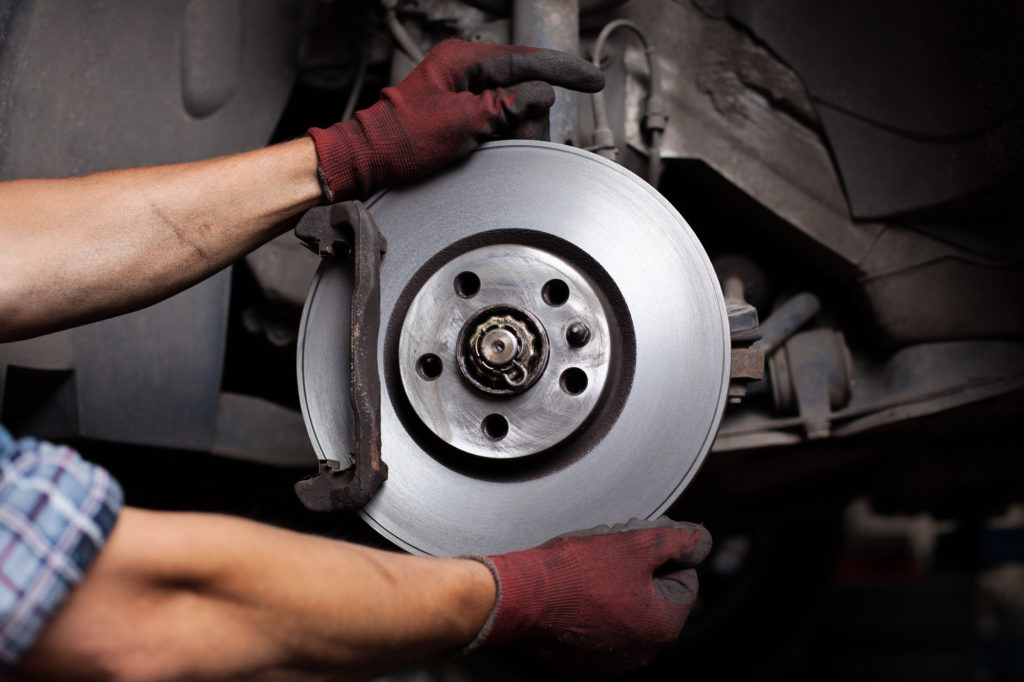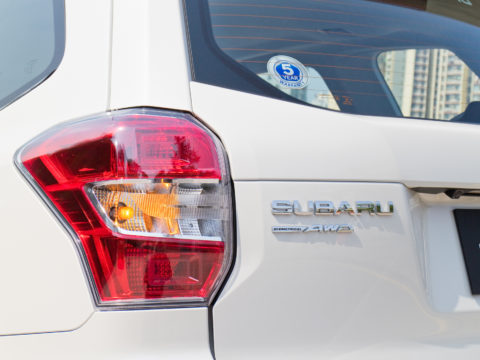Brake assist is automotive technology that increases braking pressure when the system detects an emergency. These systems represent an interim step in the evolution of machine-assisted driving toward a future of truly automated automobiles, or unmanned vehicle systems, that are interconnected via the Internet of Things.

The technology was developed in response to research conducted at Mercedes-Benz in Berlin in 1992 showing that more than 90% of drivers fail to apply enough brake pressure when making an emergency stop. The brake assist system helps the driver to fulfill the intention to stop the vehicle immediately. The system does not initiate emergency braking, however, like more advanced collision-avoidance systems.
Brake assist technology was first developed in a joint project by Daimler-Benz and TRW/LucasVarity.
Contents
How Brake Assists Work
The braking assist system interprets the speed and force with which the driver depresses the brake pedal to determine the intention to make an emergency stop. If the driver fails to depress the brake pedal fully, the system overrides the driver to apply brake pressure fully. The brake assist system applies full brake pressure until the antilock braking system assumes control to prevent the wheels from locking.
After an emergency braking situation, the brake pedal may not return to its normal position. You may fix this by running the engine and “pumping” the brakes a few times, which should push brake fluid through the system.
Types of Brake Assist
Since the mid-1990’s, automakers have deployed three primary brake assist systems on passenger cars and light trucks. These include the initial mechanical and hydraulic systems and systems equipped with electronic sensors and control units.
Mechanical Brake Assist
The Continental TEVES mechanical components in the brake servo detect an emergency braking situation. Those components include a pressure chamber and vacuum chamber within the brake servo and a switch component in the control housing.
The switch component locks when it detects pressure change associated with a particular force and velocity. Once the locking mechanism engages, braking power is drawn from the braking booster rather than the braking piston valve.
Electronic Brake Assist
Electric sensors detect force and velocity changes in braking pressure and activate the electronic braking assist system, which then hands control to the antilock braking system.
The sensors detect extreme skidding, among other conditions that suggest the possibility of colliding with other vehicles or leaving the roadway.
Brake Assist Advantages
In the development of automated driving, brake assist technology is considered to be “Level 1, Function-Specific Automation,” according to the ranking hierarchy of the U.S. National Highway Safety Administration (NHTSA).
That level of automation includes brake assist technology and later collision-avoidance systems, too, according to a 2014 statement from NHTSA on human factors and automated driving.
A number of vehicle manufacturers have standardized this Level 1 automation since the mid-1990’s, including Toyota for its Corolla, Camry, Yarris, and Echo models.
● Mercedes-Benz
The automaker in 1998 became the first to make brake assist standard on all models. By 2006, Mercedes-Benz introduced “Brake Assist Plus” to add to Level 1 driver-assist technology. That system warns the driver and pre-charges brakes without overriding the driver to brake automatically. The Brake Assist Plus system significantly reduced the rate of rear-end collisions.
● Toyota
The automaker standardized brake assist technology for most of its passenger cars in 1997, which included Corolla, Camry, Yaris, and Echo models.
● Volvo
The Volvo System Collision Warning with Auto Brake “CWAB” warns the driver of an impending collision with auditory and visual alerts. The system uses radar and does not require the driver to apply the brakes.
Brake Assist Limitations
With increasing complexity comes increased manufacturing costs with room for error.
- Brake assist systems may only help the driver to complete emergency braking.
- These systems do not detect the emergency itself.
- In November 2021, Toyota recalled more than 227,400 Camry sedans in the 2018 and 2019 model years that were sold mainly in North America. The manufacturer said a defect could suddenly cause loss of the system in those particular cars.
Other Safety Car Features
- Brake Controller: An electric controller that supplies power from the vehicle to the tow trailer’s electric brake.
- Brake Booster: An electric controller that increases the pressure the brake pedal exerts on the brake master cylinder by using engine vacuum and pressure.
- Anti-lock Braking System: An electronic system that detects emergency braking and then “pumps” the brakes to prevent the wheels from locking.
- Forward Collision Warning: System provides alerts to the driver to warn of an impending forward collision.
- Automatic Emergency Braking: Electronic system that activates brakes without driver assistance when sensors detect an emergency.

FAQ
Most cars on the road today, except for older antiques, include some form of brake assist technology.
Do I Need a Brake Assist?
Manufacturers install electronic brake assist systems on every new car. Safety experts recommend the systems to lessen collision risks.
Does My Car Have an EBA?
Many cars on the market today have electronic braking assist (EBA) systems installed as a standard feature.
Since 2011, the European Union has required all new vehicle models to come with such systems. The United States plans to introduce more advanced automatic braking systems on all vehicles by 2025. Yet, 20 manufacturers promised to make the system standard by 2022, accounting for 99% of the U.S. market.
Why Is My Brake Assist Light On?
Your car’s brake assist light may appear when the brake pads need to be replaced. Try running the engine and pumping the brake pedal first.
How to Fix Brake Assist?
To begin, switch off the engine and then pump the brake pedal to bleed all of the brake fluid from the system. Then, keep the brake pedal depressed while you restart the engine. After the engine ignites, keep slight pressure on the brake pedal to check the brake pressure.
If there is no brake pressure while depressing the pedal, the brake hose might be faulty. However, if the brake hose is still intact and functional, the problem might go deeper. In that eventuality, examine the “check valve” where the vacuum line connects to the brake booster.
If replacing neither the brake hose or check valve restores proper brake pressure, the brake assist system is definitely malfunctioning and requires replacement. In that case, have the vehicle towed to a qualified repair shop to replace the system.
How to Turn Off Brake Assist?
On most modern brake assist systems, there is no easy way to permanently disable the brake assist system.
Most drivers have no problems or difficulty with electronic brake assist systems, unless they’re using their passenger vehicle as an amateur racing car on a closed circuit.
If you find yourself annoyed by automated braking, you might ask yourself why your vehicle’s collision-avoidance system thinks you’re about to collide with other objects. The problem might be your unsafe driving. On many vehicles, there is no way to turn off the brake assist system.














